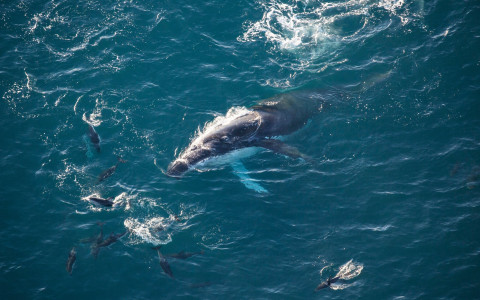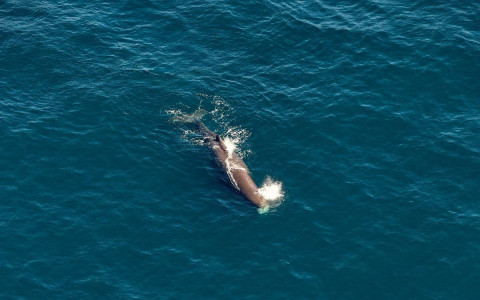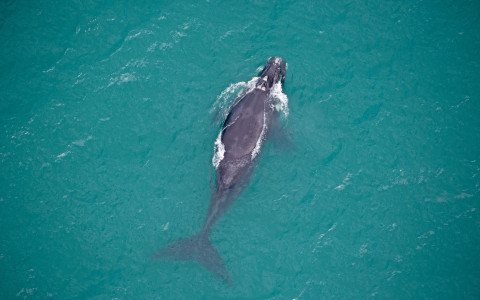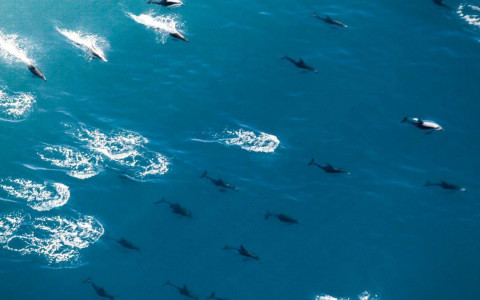Sealife
Learn more about the marine wildlife that you will discover on your whale watching flight with us!
The humpback whale is a species of baleen whale. It is one of the larger rorqual species, with adults ranging in length from 12–16 m and weighing around 25–30 t. The humpback has a distinctive body shape, with long pectoral fins and a knobbly head. The sperm whale or cachalot is the largest of the toothed whales and the largest toothed predator. It is the only living member of the genus Physeter and one of three extant species in the sperm whale family, along with the pygmy sperm whale and dwarf sperm whale of the genus Kogia. The southern right whale is a baleen whale, one of three species classified as right whales belonging to the genus Eubalaena. Southern right whales inhabit oceans south of the Equator, between the latitudes of 20° and 60° south. In 2009 the global population was estimated to be approximately 13,600. The blue whale is a marine mammal belonging to the baleen whale parvorder Mysticeti. Reaching a maximum confirmed length of 29.9 metres and weighing up to 199 tonnes, it is the largest animal known to have ever existed. The dusky dolphin is a dolphin found in coastal waters in the Southern Hemisphere. Its specific epithet is Latin for "dark" or "dim". It is very closely genetically related to the Pacific white-sided dolphin, but current scientific consensus holds they are distinct species. Hector's dolphin is one of four dolphin species belonging to the genus Cephalorhynchus. Hector's dolphin is the only cetacean endemic to New Zealand, and comprises two subspecies: C. h. hectori, the ... Wikipedia Bottlenose dolphins are aquatic mammals in the genus Tursiops. They are common, cosmopolitan members of the family Delphinidae, the family of oceanic dolphins. Molecular studies show the genus definitively contains two species: the common bottlenose dolphin and the Indo-Pacific bottlenose dolphin. 
Humpback Whale

Sperm Whale

Southern Right Whale

Blue Whale

Dusky Dolphin

Hector's Dolphin

Bottlenose Dolphin












